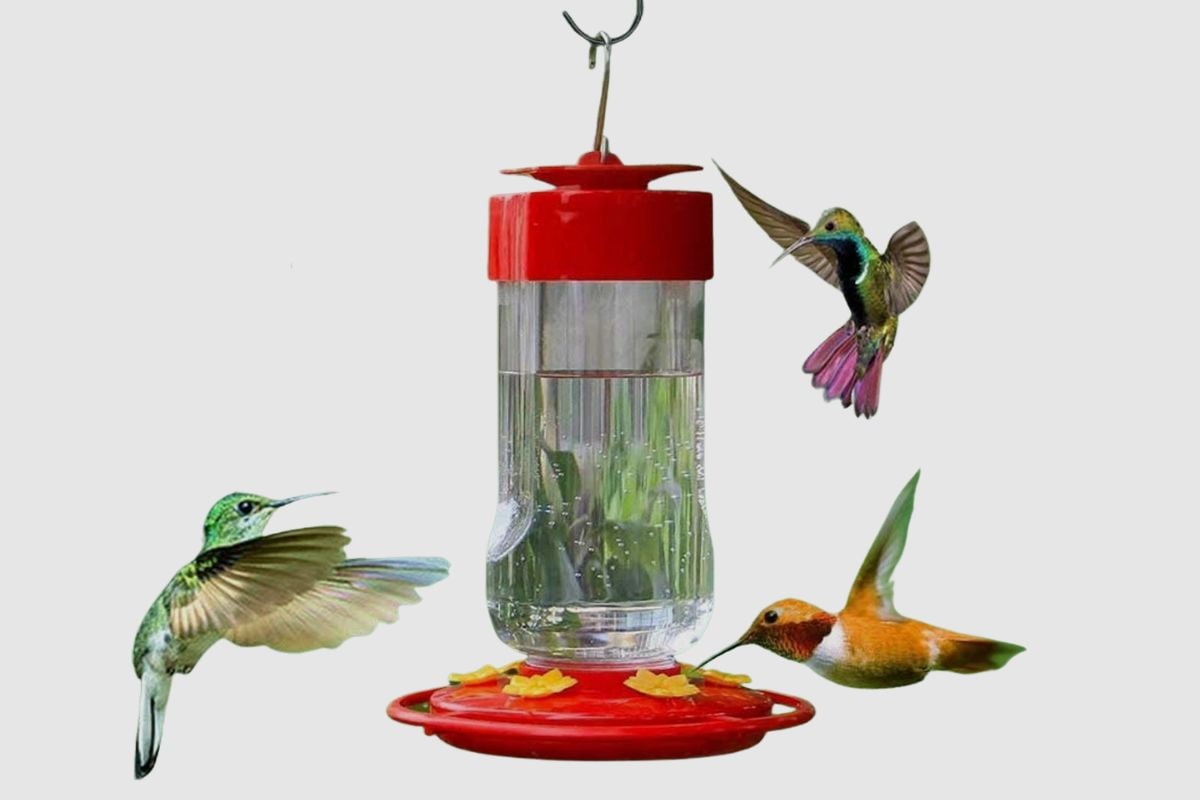Hummingbirds are fascinating birds that bring joy to any yard. However, they can sometimes be deterred by bees and wasps. If you’re a hummingbird enthusiast, you may be wondering how to make your hummingbird feeder bee-proof.
In this article, we will explore the different components that contribute to a bee-proof hummingbird feeder, including its design and materials. We will also discuss how to create a bee-proof environment for your hummingbirds.
Design Elements of a Bee-Proof Hummingbird Feeder
A bee-proof hummingbird feeder is specifically designed to allow birds to feed without interference from other insects. These feeders typically have a narrow design that prevents large bees from accessing the nectar. Additionally, they are made of non-porous materials like glass or metal, which do not provide a foothold for bees and wasps. Some hummingbird feeders even come with built-in bee guards to further deter bees and wasps. It’s also important to hang the feeder away from areas where bees or wasps might gather.
Creating a Bee-Proof Environment
To create a bee-proof environment for your hummingbirds, consider planting native nectar-producing plants in your garden. These plants not only provide food for the hummingbirds but also act as natural deterrents for bees and wasps. Additionally, place your hummingbird feeders in sunny spots far away from other sources of nectar, such as flowering plants or trees with sap flows. Clear the area surrounding the feeder of vegetation to eliminate hiding spots for bees and wasps. Regularly spraying insect repellent in the vicinity of the feeder can also help keep unwanted pests away from the hummingbirds’ food supply.
Considerations When Purchasing a Hummingbird Feeder
When buying a hummingbird feeder, there are several factors to consider to ensure it is bee-proof. Look for feeders specifically designed for hummingbirds, as they will have features like narrow entrances and bee guards. These features make it difficult for bees and wasps to access the nectar. Additionally, choose feeders made of durable materials like metal or glass that can withstand accidental contact with bees or wasps. When hanging the feeder, make sure it is placed away from other sources of nectar to attract only hummingbirds.
Conclusion
Ensuring that your hummingbird feeder is bee-proof is crucial for allowing these delightful birds to feed without interruption from other insects. By considering design elements, creating a bee-proof environment, and selecting the right feeder, you can provide a safe and enjoyable feeding experience for your hummingbirds.
